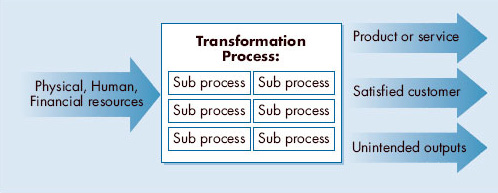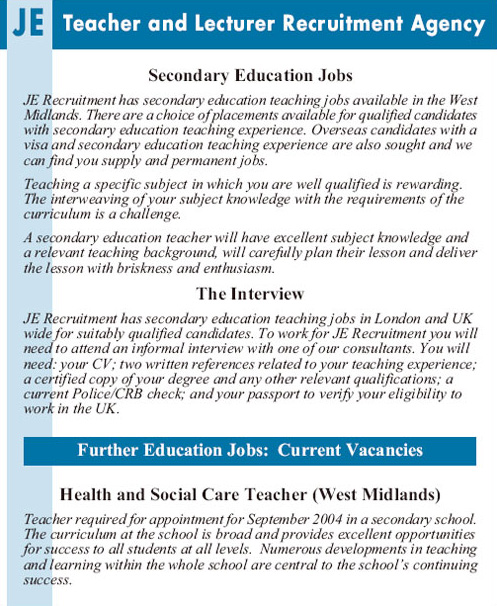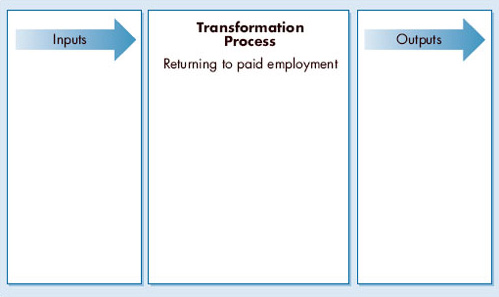2.3 Resources and outputs
As for outputs, we have already identified the end product or service as one key output. We have also recognised that effective processes lead to the ‘output’ of a satisfied customer. There are often other unintended outputs which should not be forgotten. In our sandwich example, as in all work activity, there are: waste products, e.g. bits of limp salad, discarded packaging, etc., which need to be cleared up; other tasks generated, e.g. washing up the equipment used and the selling of the sandwich; and potentially useful by-products, e.g. the breadcrumbs could be used in other recipes.
Our diagram can now be organised slightly differently to reflect these things (see Figure 5).

Activity 2
Let us return to the example of a transformation model you drew for yourself in Activity 1. Get a clean, lined piece of notepaper and at the top write the title ‘Task Process Report’. Underline this and on the next line write ‘Task Description’. Immediately next to it write two sentences to describe the task you analysed in Activity 1. Then on the space below this on the sheet, do the following tasks:
Write the sub-heading ‘Physical Resources’ and underneath list the physical resources you used in the task.
Next, write the sub-heading ‘Financial Resources’ and underneath write two sentences on what funds were needed for the task and where they came from.
Under the next sub-heading of ‘Outputs’ list what you think these were and label them intended or unintended.
Finally, write the sub-heading ‘Effectiveness’ and under it write two sentences on how effective you were in performing the task and why you think that.
Discussion
Doing this activity has allowed you to develop a more detailed understanding of the work task you chose to analyse. You may now feel confident that you are doing this task effectively and you should be able to identify why you feel this: among the intended outputs you should have some idea of the goals or objectives you had in doing the task being achieved. You may also have some feedback from a satisfied customer or internal customer. On the other hand, you may feel you could improve your performance of the task and have some ideas how to go about it. There may be physical resource improvements based on the state of the equipment you used, or the materials you had to work with. Perhaps there were financial reasons based on the cost of the inputs or a lack of funding.
Alternatively, it might be the way you are using the other inputs, in which case you may have some unintended outputs, such as a lot of waste. In addition to this, the activity was structured so that in the end you produced a brief management report.
Case study: supply and demand
The aim of this case study is to examine how the ideas and techniques for self-management you read about can be used and adapted to fit personal circumstances. In this case – the story of Kiran, a mother of two young children returning to paid employment – you will be asked to think how the ideas might be useful to her in managing her return. You may be asking why a decision to go back to paid work is being discussed in the context of a course about management. You may know that one of the definitions of management is to cope with, to deal with, to handle, to manipulate. By considering Kiran's case study, we want you to think about how she copes with significant changes in her life, in other words, how she manages them.

Supply and demand: Part 1 – Kiran's decision
I'm a mother of two children, Akaash who is aged eight and Vanita who is five. I've been married to Rohit for twelve years. Before Akaash was born I trained as a secondary school teacher. I worked for about four years, mainly teaching health and social studies, including vocational A levels. Since then, I've been a full-time mother and homemaker. I've really enjoyed spending time with Akaash and Vanita, but I have always promised myself that I will get back into teaching when Vanita was old enough. My husband, Rohit, always thought this would be a good idea, although as a quantity surveyor he works long hours and sometimes has to work away from home on new projects.

We now live in Castletown in the English Midlands. Rohit's family have lived in this area since the 1970s, but I was brought up in London. I really get on well with them, especially his mum. She's been a widow for a few years and she is in very good health. She spends a lot of time at the local gurdwara [a Sikh temple] and remains an active member of the community. She does like me to call in when Rohit is away.
This September, Vanita started in the reception class at primary school. A couple of weeks into the school term I noticed an advert for a teacher supply agency which specifically mentioned that they needed specialists in health and social care subjects.
You won't believe how much I thought about that advert as I got on with things until Rohit came home. After the children had gone to bed, that evening we had a long discussion about the issues around my going back to work.

Activity 3
This activity asks you to analyse Kiran's task of returning to paid employment using the transformation model diagram drawn in Figure 9. Copy the diagram onto a blank piece of notepaper and then do the following tasks:

Discussion
What sort of output did you identify? It should really be securing a supply teaching post. Of course, it is possible that other goals might have been established. Kiran and Rohit might have decided that they wanted a third child or that they wanted to focus on Rohit setting up an independent quantity surveying company. However, for the purpose of this case study, let us suppose that they did decide that Kiran should resume her career.
What inputs did you suggest? Remember that these should be resources that Kiran can draw on.
My list included:
Kiran's teaching qualification
her teaching experience
her increased time availability
Rohit's support
possibility of family support.
